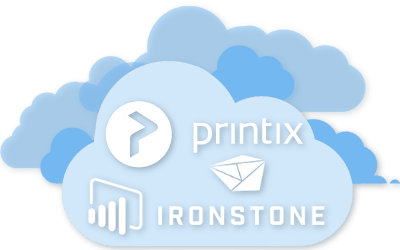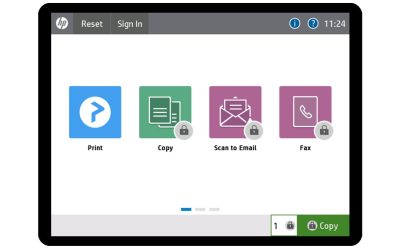With Windows Server 2012 reaching its end-of-life on October 10, 2023, there are several risks associated with continuing to use it for print management.
These risks include:
Security vulnerabilities
After the end-of-life date, Microsoft will no longer release security updates or patches for Windows Server 2012. This means that any new security vulnerabilities discovered will not be addressed, leaving your print management infrastructure exposed to potential threats.
Compliance issues
Depending on the industry you operate in, using an unsupported operating system like Windows Server 2012 may result in compliance violations. Many regulatory standards require organizations to maintain up-to-date and supported software to ensure data security and privacy.
Lack of vendor support
Third-party vendors may stop providing support or updates for their print management solutions on Windows Server 2012. This can lead to compatibility issues, performance problems, and an inability to leverage new features or enhancements.
To address these risks and ensure effective print management, you have a few options:
- Upgrade to a supported version
The most straightforward option is to upgrade your print management infrastructure to a newer and supported version of Windows Server. Consider migrating to Windows Server 2016 or the latest available version at the time. This will provide you with continued security updates, vendor support, and compatibility with newer print management solutions. - Implement print management software
Instead of relying solely on the built-in print management features of Windows Server, you can opt for third-party print management software. These solutions offer more advanced features, enhanced security, and compatibility across different server versions. Research and choose print management software that suits your specific requirements. - Explore cloud-based print management
Another alternative is to consider cloud-based print management solutions. With this approach, you can offload the infrastructure and maintenance responsibilities to a cloud service provider. Cloud-based print management offers scalability, easy updates, and simplified administration, eliminating the need for on-premises server hardware.
Whichever option you choose, it’s crucial to plan and execute the migration or implementation process carefully. This includes testing the new environment thoroughly, ensuring compatibility with your existing print devices and drivers, and training your IT staff on the new system. Additionally, consider consulting with a qualified IT professional to assist you in the transition.
In this blog, we’ll show you how to leverage the Printix serverless solution to migrate your print infrastructure to the cloud and future-proof your print environment.
Why move to the cloud?
Moving business functions to the cloud isn’t always simple or easy. Some transitions require extensive planning, strategy and communication before deployment even begins.
However, moving print management to the cloud can be as simple as:
- Eliminating your physical print server
- Adopting software-as-a-service
- Moving printer administration and support tasks to a cloud-based productivity application.
Migrating to the cloud offers a more flexible, scalable, and robust way of printing. A true cloud solution, like Printix managed print services, doesn’t require additional services or have on-premises infrastructure dependencies like other hybrid solutions. The serverless architecture eliminates print servers from your network, relieving IT burden and creating a secure, cloud-managed print infrastructure for modern cloud printing – anytime, anywhere, from any device and to any printer.
Print management: on-premise vs. cloud
Print management software solutions include monitoring, assessment, auditing, accounting and management tools to control, measure and optimize printing resources. These are traditionally enterprise solutions that can provide a significant return on investment if the company has multiple users and printers.
Here are the main points of comparison for on-premise and cloud print management:
- Traditional print management software is released when new versions are made available and typically requires maintenance fees to access updates, fixes and new features.
Cloud-based software is automatically updated with fixes and new features – available immediately. - Scalability to meet demand with traditional onsite solutions usually means investing in additional print servers (to avoid failure due to capacity issues).
The ability to scale on demand is one of the biggest advantages of cloud technology solutions and is limited only by the ability of the application to scale with it. - Implementing and deploying a print management solution on-site can take hours, if not days, and require many infrastructural changes.
Deploying a cloud solution and services is quick to create and deploy with no changes necessary to the existing print environment. - On-premises authentication of users and enabling ‘Pull/Follow’ secure printing is achieved by a combination of user login, pin codes or ID cards and hardware card readers.
Cloud solutions can use any of these methods as well as provide secure user authentication through a web application from a smartphone. - In traditional print server architecture, documents remain secure on the network.
A cloud solution architecture provides the same document security, as all print data stays on the local network.
What outcomes can Printix deliver?
Printix helps businesses of all sizes eliminate the need to install traditional on-premises print management software with associated print servers. Users have seen benefits like:
- Reduced costs of on-premises infrastructure and less support and maintenance fees after replacing print servers with a cloud-managed print infrastructure.
- Boosted productivity for employees with the automatic discovery of print networks and automatic print queue installation by location, group or self-service for increased efficiencies.
- Faster provisioning and onboarding with the SaaS model and no installation and configuration complexities.
- Simplified admin with centralized management and automatic updates from any location at any time.
Don’t wait – migrate and modernize
As you move your IT services and server functions to the cloud, now is the time to consider updating your print infrastructure so you can enjoy the advantages of working in the cloud.
Don’t let the Windows Server 2012 and 2012 R2 end-of-life creep up on you. Start making an action plan today and discover the full benefits of a cloud-based print management service for your modern printing environment.




